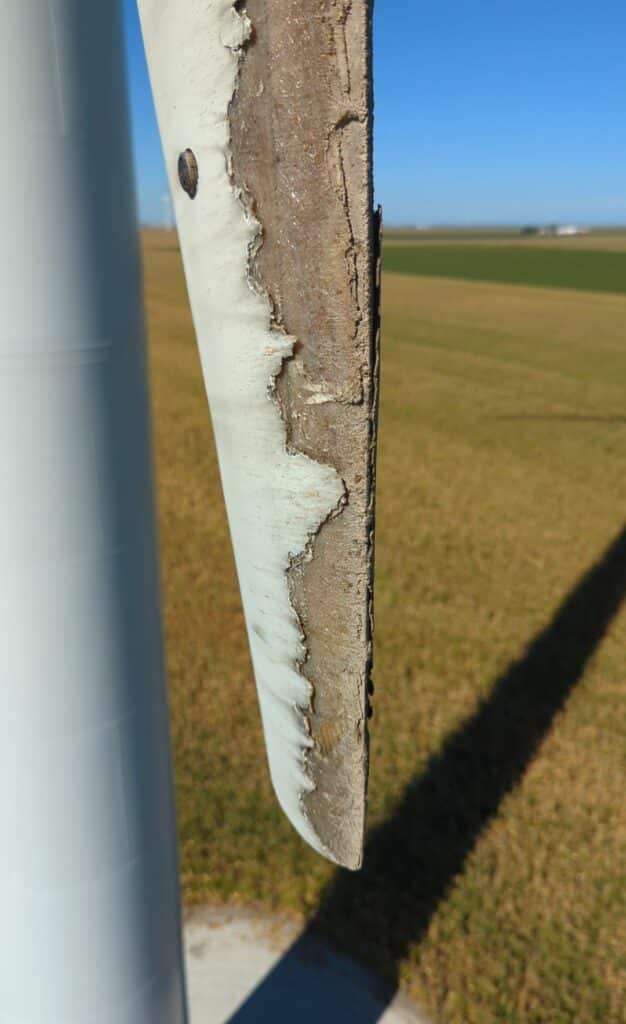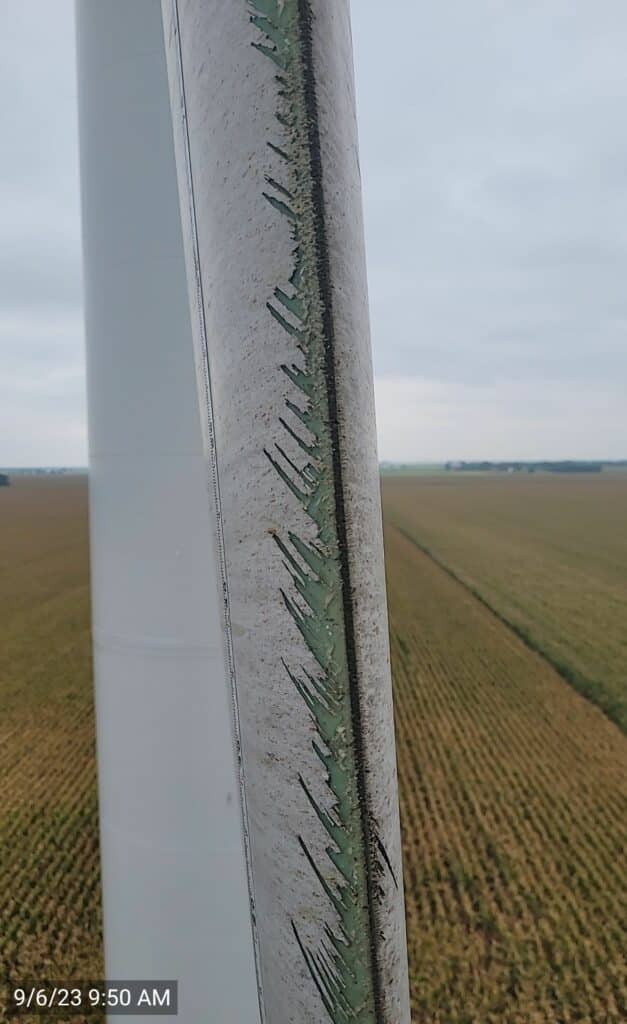In my last post two weeks ago, I wrote about the importance of preventive blade maintenance and its impact on long-term blade durability. This time I will take a more in-depth look at one of the most longstanding issues with blades – Leading Edge Erosion.
Material erosion as a phenomenon is a part of fluid dynamics and it happens everywhere in nature where there are fluids in motion, from riverbanks to engines, pipes, cars, and airplanes, and of course, wind turbine blades. In simple terms, it is the loss of material due to the impact of solid particles on the surface. As erosion impacts so many applications, the subject has been studied extensively for a very long time. You can see examples here, here, and here. To this day it remains a complex field of study where, however, the modern CFD modelling has provided new insights and understandings on the subject.

In wind energy, erosion mostly impacts the blades and more precisely, the leading edge of the blades. The leading edge is the foremost part of the blade that first contacts the air as the blade moves. The sources of erosion are mostly rain droplets and particles in the air.
The potential significance of erosion or “blade contamination” was certainly understood early on as new airfoils were designed in the 1990s (Tangler 1992). Many of the early studies, however, concentrated on blade contamination from bugs and debris as during that time it was the most widespread problem. This made sense, as any contamination degrades the aerodynamic performance of the blade and decreases the energy output of the turbine. Therefore, designing an airfoil which was less susceptible to contamination was a top priority. Erosion was present too, but due to the small size (< 25 meters) of the blades at time, the blade speeds were not high enough for erosion to become dominant. However, that would soon change as erosion grows exponentially with speed.
In the early 2000s, wind turbines grew rapidly and over the next 15 years, blades grew from 25 meters to 90 meters. This resulted in the increase of the blade speeds from 40 m/s to up to 90 m/s. This increase in speed has some profound implications. Following the DNV’s testing methodology DNV-RP-0573, it has been shown that the life expectancy of a conventional gelcoat coating on a wind turbine blade can go down from 20 years to as low as 1 year, as the blade speed increases from 60 m/s to 90 m/s.

Bladefence entered the market around the same time as the wind turbines blades were growing rapidly, and we witnessed the resulting mayhem firsthand. In the early years of 2010s there was still a widespread expectation that blades would be “maintenance-free” or at least that they would last a significant part of the turbine’s 20–25-year lifetime with minimal maintenance.
Hindsight is always 20/20 and now it is easy to say that those expectations were completely unrealistic and blade maintenance based on those expectations was, and still is, unsustainable.
Luckily, today we know better and there are solutions for the problem. A variety of products have been developed over the years and we at Bladefence have experience with most of them. Even though we once partnered with 3M to produce this great video, we remain open to all the solutions and will remain committed to finding the best ones for our customers. Various products on the market have different properties and the suitability of any of them should be assessed individually case by case.
If you are interested in discussing any of your blade issues or leading-edge erosion, do not hesitate to contact me or our sales teams in Europe and North America.
Be safe out there and happy Thanksgiving to our American friends!
